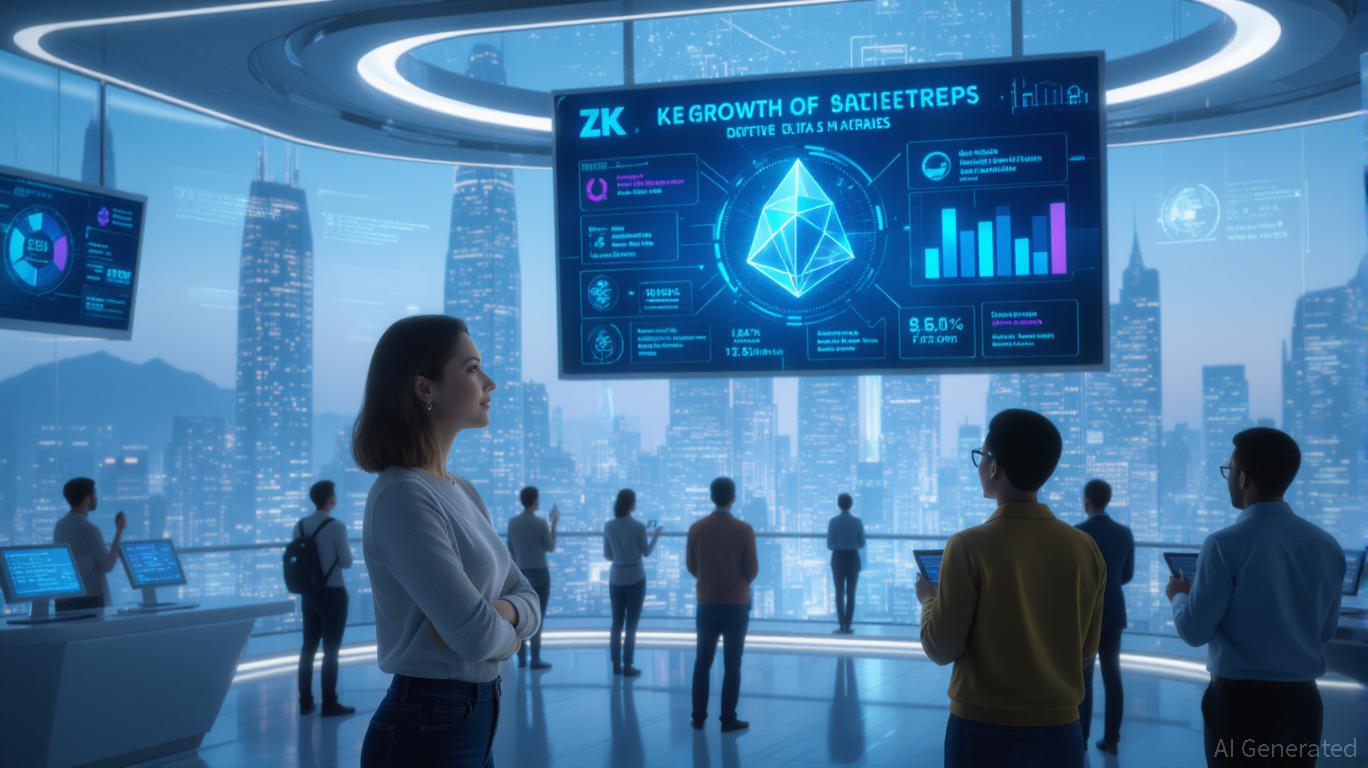Ethereum’s AI boom depends on Wall Street involvement and competition across blockchains
- BitMine Immersion, holding 2.15M ETH, predicts Ethereum's "supercycle" driven by Wall Street blockchain adoption and AI protocols. - Institutional ETFs and decentralized AI agents are cited as key drivers, with PayPal/Kite AI investments highlighting sector growth. - Citigroup warns of overvaluation risks despite 108% ETH price surge, contrasting with BitMine's $9.45B valuation surge. - Competition from Base/Solana and regulatory challenges remain concerns, though Ethereum's PoS upgrade and stablecoin do

BitMine Immersion Technologies, the largest corporate owner of Ether, has placed
Wall Street’s adoption of blockchain is seen as a major driver. BitMine points to the expanding use of Ethereum-based ETFs, structured offerings, and treasury strategies as sources of liquidity. For example, BlackRock’s crypto ETFs have brought in $260 million in annualized revenue, indicating a shift in how traditional finance views digital assets Cointelegraph, [Ethereum bulls tout adoption, AI-driven supercycle, but …] [ 2 ]. Still, not everyone on Wall Street is optimistic.
Agentic AI protocols are also playing a pivotal role. Both BitMine and venture capital giant Andreessen Horowitz (a16z) assert that AI agents need neutral, decentralized networks like Ethereum to operate as economic participants. “Crypto is the natural fit for AI,” said Ben Horowitz of a16z, stressing that AI cannot rely on conventional payment rails such as credit cards a16z, [Ben Horowitz on AI and crypto] [ 4 ]. Onchain autonomous agents that can trade, manage assets, or interact with DeFi are expected to boost demand for Ethereum’s smart contract features. PayPal Ventures’ $18 million funding of decentralized AI infrastructure provider Kite AI further highlights the sector’s momentum Cointelegraph, [PayPal Ventures invests in Kite AI] [ 5 ].
Although Ethereum is recognized for its leadership in smart contracts, it faces mounting competition from networks like Base and
Ethereum’s recent price action shows strong momentum, with a 108% increase over the past six months, reaching $4,177 as of September 2025. Yet, Citigroup cautions that the current valuation may be driven more by speculative enthusiasm than by underlying fundamentals. The bank pointed to “buying pressure and excitement over use-cases” as short-term factors, but warned about the risk of overvaluation TradingView, [Ether price data] [ 7 ]. Meanwhile, BitMine’s market cap has surged from $37.6 million in June to $9.45 billion, reflecting its pivot to an ETH-focused treasury strategy.
The prospect of a supercycle depends on expanding adoption in both finance and AI. If institutional investment and AI-powered onchain activity continue to rise, Ethereum could experience sustained demand. Nevertheless, regulatory challenges, competition from other blockchains, and market fluctuations remain significant risks. As Vitalik Buterin has emphasized, preserving Ethereum’s decentralized principles while scaling up is essential for its future success Vitalik Buterin blog, [Open-source infrastructure in finance] [ 8 ].
Disclaimer: The content of this article solely reflects the author's opinion and does not represent the platform in any capacity. This article is not intended to serve as a reference for making investment decisions.
You may also like
ZK Technology Experiences Price Spike: Advances in Blockchain Scalability and Signs of Institutional Embrace
- Zero-Knowledge (ZK) technology's valuation surged in 2025 due to blockchain scalability breakthroughs and institutional adoption, with ZK rollups achieving 15,000 TPS and $3.5B total value locked. - Platforms like ZKsync and StarkNet enabled real-world applications (tokenized assets, AI contracts) while Deutsche Bank and Sony adopted ZK for confidential settlements and digital rights management. - Ethereum's zkEVM integration and regulatory clarity via U.S. acts accelerated institutional trust, with proj

Vitalik Buterin Backs ZKsync: Igniting Ethereum Layer 2 Innovation and Ushering in the Next Era of DeFi
- Vitalik Buterin's endorsement of ZKsync's Atlas upgrade accelerates Ethereum's ZK-based scalability strategy, positioning ZKsync as a key DeFi infrastructure player. - The upgrade achieves 15,000+ TPS with near-zero fees via ZK Stack, enabling 30% stablecoin dominance and bridging Ethereum's L1-L2 liquidity gaps. - Institutional adoption surges as ZK token gains 50% post-endorsement, supported by $15B in ZK-related DeFi inflows and StarkNet's TVL tripling in Q4 2025. - Upcoming Fusaka upgrades (30,000 TP

ZK Atlas Enhancement and Its Influence on Layer 2 Scaling
- The ZK Atlas Upgrade (Oct 2025) revolutionized Layer 2 scalability with 15,000+ TPS and $0.0001/tx costs via innovations like Atlas Sequencer and Airbender prover. - Vitalik Buterin's GKR protocol reduced ZK verification costs 10-15x, slashing Ethereum gas fees by 90% and boosting DeFi competitiveness. - ZK ecosystem TVL hit $3.5B by 2025, with $15B in Bitcoin ETF investments and 60.7% CAGR projected for ZK Layer 2 market growth to $90B by 2031. - Institutional adoption accelerated as stablecoins capture

Bitcoin Updates Today: Veteran Bitcoin Holders Selling Raises Questions: Is the Market Unstable or Undergoing a Tactical Change?
- Bitcoin OG holders are accelerating sales of decade-old BTC stashes, with $1B+ moved from pre-2018 wallets in 2025. - Analysts debate motives: Erik Voorhees sees long-term adoption focus, while Willy Woo cites quantum risk mitigation and SegWit address shifts. - Price volatility intensifies as BTC struggles to reclaim $105k-$106k support, with $722M realized losses and ETF buying ($530M) failing to offset selling pressure. - Historical patterns suggest potential 15-20% corrections, with on-chain expert D
